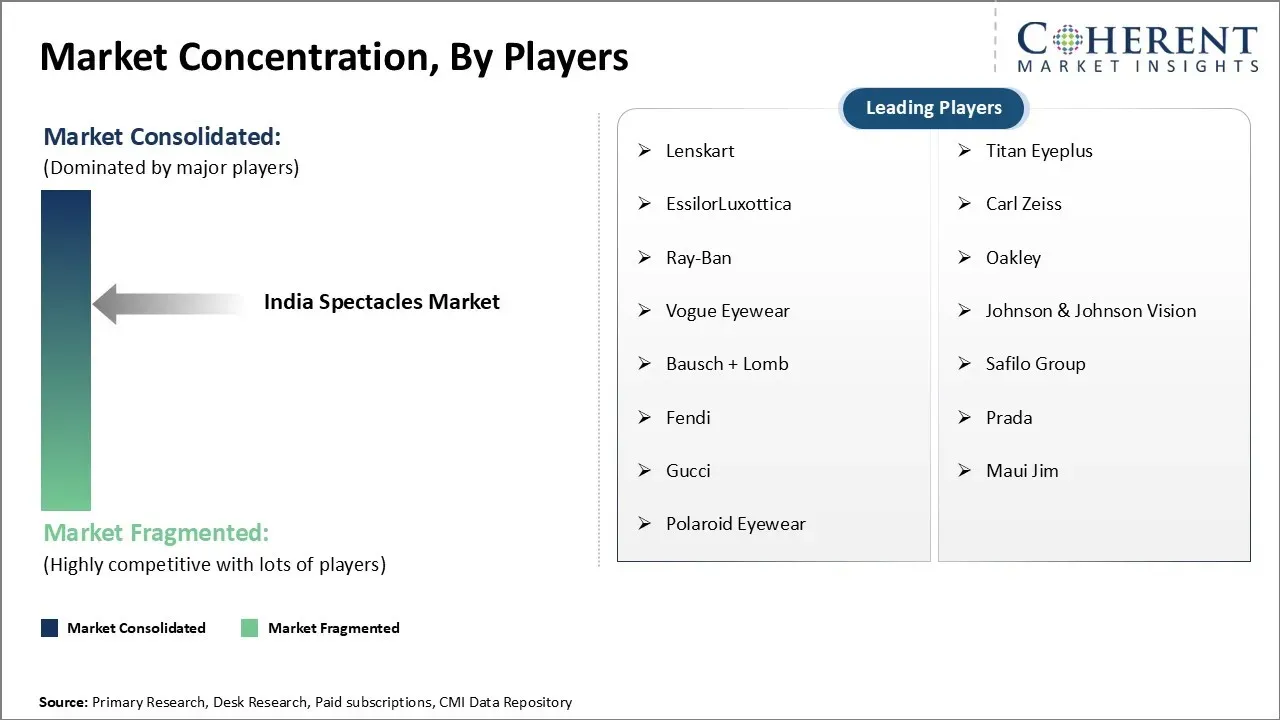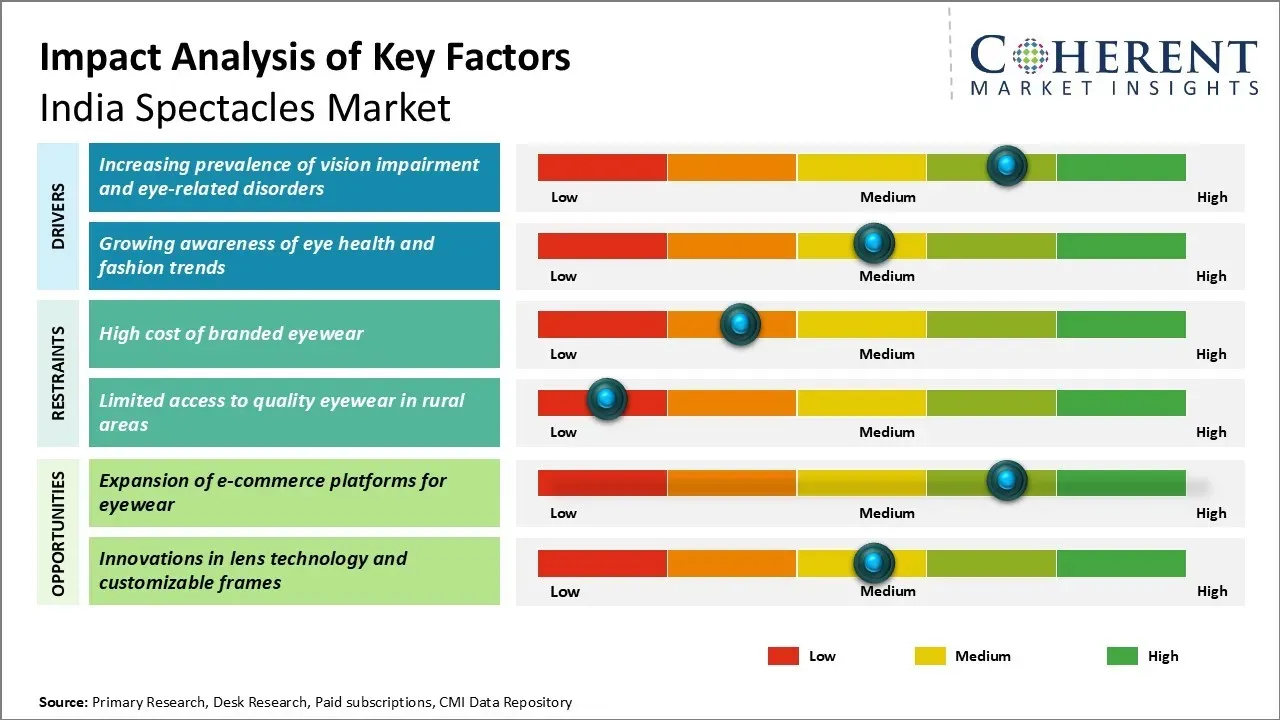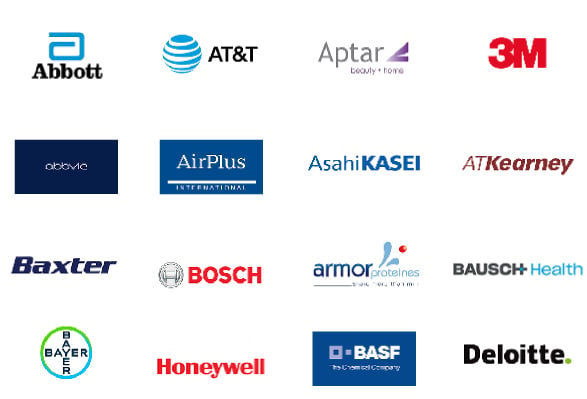India Spectacles Market is estimated to be valued at USD 4.31 Bn in 2025 and is expected to reach USD 9.20 Bn by 2032, exhibiting a compound annual growth rate (CAGR) of 11.4% from 2025 to 2032.
Key Takeaways of the India Spectacles Market:
Market Overview:
Factors such as rising disposable income, increasing awareness about eye care, growing geriatric population, and changing lifestyle habits have been driving the demand for spectacles in India. Moreover, aggressive marketing campaigns by major players, easy availability of spectacles through e-commerce platforms and retail shops, and the rising prevalence of eye diseases including eye inflammation have contributed to the market growth. However, the market remains highly unorganized. Established players are focusing on expanding their reach in rural areas to tap the remaining market potential. E-commerce portals are also strengthening their supply networks to provide a better shopping experience. With growing health awareness and rising spending power, India spectacles market is expected to continue growing rapidly over the forecast period.
Product Type Insights- Prescription Glasses Lead in Demand as Correcting Vision Issues Remains Crucial
In terms of Product Type, Prescription Glasses segment is estimated to contribute the highest market share of 45.12% in 2025 owing to rising cases of vision problems. Prescription glasses cater to visual issues like myopia, hypermetropia, and astigmatism which are increasingly common among Indians. As per eye care professionals, excessive smartphone and digital device usage has aggravated eye strains in recent years. This has boosted demand for vision correction solutions like prescription lenses embedded with features like progressive, bifocal, or anti-reflective coatings. Prescription glasses hence see robust demand as the most effective means to address refractive errors and enable clear vision for activities like driving, reading, or work-related tasks. The availability of advanced lens technologies and treatments like thin, lightweight, and durable material further increases preference for prescription glasses over other vision aids.
Material Type Insights - Material Practicality Uplifts Plastic Dominance
In terms of Material Type, Plastic segment is estimated to contribute the highest market share of 38.2% in 2025 owing to its cost and practical advantages. Plastic-based lenses are significantly light-weight, more durable, and less prone to scratches compared to metal or premium materials. This makes them suitable for daily and prolonged wear. Plastic also costs substantially lower than alternatives, expanding the choice even for value-conscious customers. Manufacturers prefer plastic for mass production of spectacles as it is easy to mould into varied frames and shapes. The emergence of anti-reflective, blue light filtering, and other advanced plastic lens treatments have further boosted plastic popularity over other materials. Plastic spectacles are hence commonly used as a stylish and affordable option to address vision problems for the general population.
Distribution Channel Insights - Convenience Drives Preference for Online Channels
In terms of Distribution Channel, Online Retail segment is estimated to contribute the highest market share of 53.4% in 2025 driven by its inherent convenience benefits. Online platforms have made purchasing spectacles simpler by providing virtual try-on and home trial options. Customers can browse a wide assortment of frames, lenses, and brands on e-commerce sites from the comfort of their homes. Online retailers also offer attractive deals, discounts, cashbacks, and faster deliveries to doorstep which entices more buyers. The COVID-19 pandemic has further accelerated digital adoption as customers turned to contactless shopping channels for safety. Online stores also meet the growing demand from tier 2/3 cities by offering a consistent experience comparable to retail outlets. Backed by strong fulfilment infrastructure, online channels hence see increased traction over traditional stores for spectacle shopping in India.

Get actionable strategies to beat competition: Request sample copy
Key Developments:
Top Strategies Followed by India Spectacles Market Players
Emerging Startups in the India Spectacles Market
India Spectacles Market Report Coverage
| Report Coverage | Details | ||
|---|---|---|---|
| Base Year: | 2024 | Market Size in 2025: | US$ 4.31 Bn |
| Historical Data for: | 2020 To 2023 | Forecast Period: | 2025 To 2032 |
| Forecast Period 2025 to 2032 CAGR: | 11.4% | 2032 Value Projection: | US$ 9.20 Bn |
| Segments covered: |
|
||
| Companies covered: |
Lenskart, Titan Eyeplus, EssilorLuxottica, Carl Zeiss, Ray-Ban, Oakley, Vogue Eyewear, Johnson & Johnson Vision, Bausch + Lomb, Safilo Group, Fendi, Prada, Gucci, Maui Jim, and Polaroid Eyewear |
||
| Growth Drivers: |
|
||
| Restraints & Challenges: |
|
||
Uncover macros and micros vetted on 75+ parameters: Get instant access to report

Discover market dynamics shaping the industry: Request sample copy
Market Driver - Increasing prevalence of vision impairment and eye-related disorders
One of the key factors driving the growth of India spectacles market is the increasing prevalence of various vision impairments and ocular diseases among the Indian population. Poor eyesight and vision related issues are becoming more and more common as lifestyles change and strain on the eyes increase due to excessive digital device usage, continuous working on computer screens for long hours, and growing pollution levels in major cities. Near sightedness or myopia occurs when the eyes grow abnormally long and images of distant objects get focused in front of the retina instead of on it. Constant straining of eyes to see things in close proximity such as phones, books, and laptop screens for long periods is one of the major lifestyle factors contributing to rising myopia rates. Similarly, there has been a rise in cataracts cases as well over the years. For instance, according to Elsevier Ltd., in May 2024, a study in India found that 21% of people with diabetes have vision impairment and 2.4% are blind. Key risk factors include older age, low education, unemployment, and diabetes-related eye conditions like diabetic retinopathy. With 101 million people living with diabetes in India (2021), about 21 million have vision problems, including 2.4 million who are blind. The study highlights the need for better care for vulnerable groups, especially those from lower socio-economic backgrounds.
Market Challenge - High cost of branded eyewear
One of the key challenges facing India spectacles market is the high cost of branded eyewear. While there is growing awareness about eye care and a rising number of people requiring vision correction, the premium pricing of many international and domestic brands means that spectacles remain unaffordable for a large segment of the population. The average Indian consumer is very price sensitive and prefers value for money over brands. However, the margins that branded retailers need to maintain, combined with high real estate rental costs and import duties, make spectacles from top labels out of reach for most people. This discourages people from regularly updating their eyewear or forcing them to unreliable cheap alternatives that may not offer proper vision correction. For the market to achieve its full potential, eyewear needs to be made more affordable so that it does not remain as luxury product but rather seen as essential healthcare item by masses.
Market Opportunity - Expansion of e-commerce platforms for eyewear
The growth of e-commerce platforms in India presents a major opportunity to drive increased access and affordability of eyewear. Online retailers are able to cut down on significant overhead costs compared to physical stores, allowing them to pass on savings to customers in the form of lower prices. This makes a wider range of branded and designer spectacles within the budget of average Indian users who can now shop from the comfort of their homes. E-commerce also makes it convenient to try out multiple brands and designs virtually through virtual try-on features before purchasing. Companies are innovating with technologies like artificial intelligence and augmented reality to improve the online shopping experience of eyewear. If major e-retailers aggressively promote and market their eyewear portfolio, it can help transform the distribution landscape and bring more users under the ambit of regular vision correction.
Share
Share
About Author
Manisha Vibhute is a consultant with over 5 years of experience in market research and consulting. With a strong understanding of market dynamics, Manisha assists clients in developing effective market access strategies. She helps medical device companies navigate pricing, reimbursement, and regulatory pathways to ensure successful product launches.
Missing comfort of reading report in your local language? Find your preferred language :
Transform your Strategy with Exclusive Trending Reports :
Frequently Asked Questions
Joining thousands of companies around the world committed to making the Excellent Business Solutions.
View All Our Clients